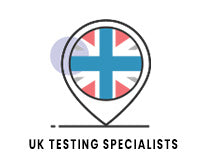Do I Have Lead Pipes? How to Check & Test

Lead has been used for manufacturing pipes since Roman times. The word ‘plumbing‘ is even derived from the Latin plumbum meaning lead! In the UK, lead has been commonly used for domestic plumbing prior to building regulations being changed in 1969.
Lead is extremely toxic, it accumulates within the body and affects every organ, particularly the nervous system and is also known to have serious consequences for the development of children’s brains. The WHO (World Health Organisation) has found that low level lead exposure can lead to reduced IQ and behavioural changes such as reduced attention spans.
| Given the toxicity of lead and that its use in pipes has been banned for the last 50 years, it’s surprising that lead pipes are still commonly found in houses. |
How can I tell if I have lead pipes?
There are some simple tests that can confirm if you have a lead supply pipe.
- Age – If your house was built after 1970 then it is very unlikely to have lead pipes.
- Inspect supply pipe – look at the pipe that supplies the main stopcock of the house (usually under the kitchen sink), if the pipe is a dark, matte grey in colour then it’s probably lead.
- Inspect joints – If you observe pipes bulging slightly at joins this is generally an indication of lead pipes.
- Magnetic – If a magnet sticks to the pipe then it is likely to be a galvanised steel pipe and not lead.
- Scratch – Carefully scratch your supply line with a screwdriver, if the pipe is soft and the metal you reveal is grey then it is likely to be lead.
If I don’t find a lead pipe is my water safe?
Lead may be present in your drinking water even if you do not find lead pipes, the only way to find out is to test!
The WHO state that there is no safe level of lead in water, in the UK the PCV (Prescribed Concentration or Value) is 10 ppb (parts per billion), water companies must ensure their supply is below this level.
Test strips sold online might sound like a cheap solution to a water testing problem, but sadly most have nowhere near the sensitivity to determine if your water is safe. Test strip products that detect at 20 mg/L (ppm) can only alert you if your water has two thousand times more lead than the prescribed limit.

How can I test my water?
If you are at all concerned that your drinking water may contain lead then we advise a laboratory test that can detect lead in the range of parts per billion (µg/L), such as those provided by The Water Professor.




















